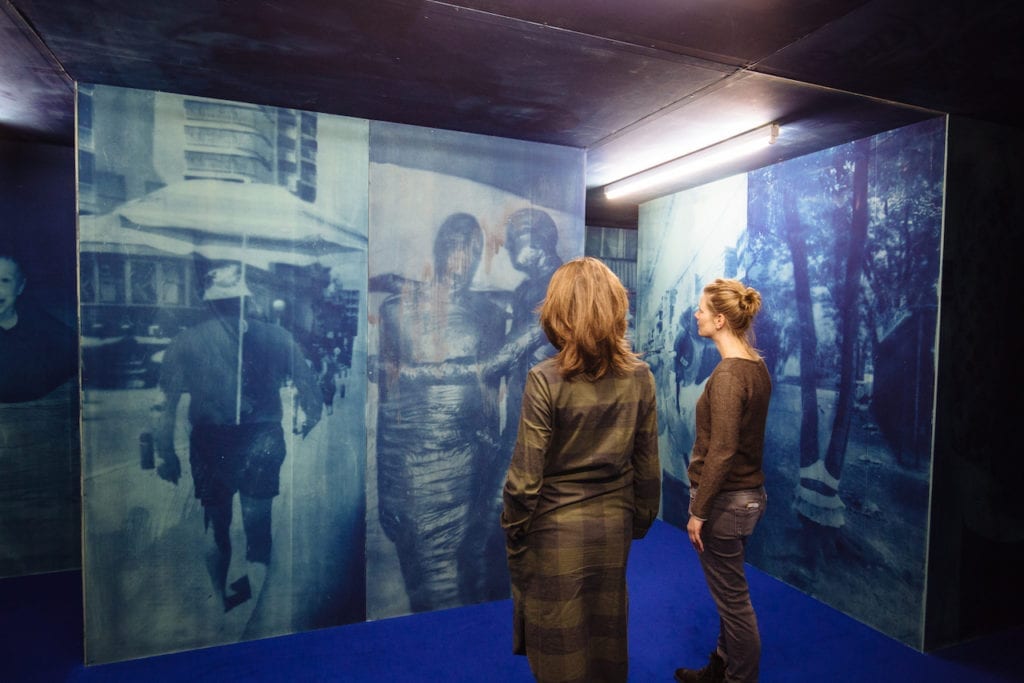The pièce de resistance of his exhibition is the section dedicated to the Fish Museum – not to be confused with the Chicken Museum, an installation Mailaender once showed at Les Rencontres d’Arles featuring real chickens in a coop, surrounded by photographs of curious human interactions with animals, bales with straw strewn across the floor, and a Chicken Museum sign inspired by a certain nger-licking fast-food chain.
“I wanted to show the Chicken Museum here,” he laments, “but I was not allowed to as there is a bird flu epidemic in Europe, therefore I decided instead on a Fish Museum. There will, for example, be one fish tank with piranhas and another with slippery eels.”
On inspecting the uninhabited piranha tank I am struck by one particular photograph stuck haphazardly inside, which features a plucked chicken with a fish’s head prominently poking out of the poultry neck cavity, a cigarette unceremoniously protruding from the fish’s mouth.
Another photograph features a gaping fish’s mouth looming close to a female nipple. Crude, vile, abusive, surreal and humorous, human meddling with fish belies our superiority over this water-dwelling creature. Arguably, Mailaender intensifies our stupidity; we are the guilty species and the fish are totally innocent. “Humour is an entry door to talk to a mass audience,” he explains.
“It’s like my grandparents, for example, who do not understand everything and cannot always find a solution, but at least with humour they are able to find a way into the work via a certain familiarity. I dislike art when it is not understandable so that people get lost entirely.
“And so it is with the Fish Museum; it questions what the institution is today, why it is that we respond and feel in particular ways when we look at art in these rarefied places. It makes me laugh when the artist is considered this genius.”

“I sent him a photograph of myself and then he painted me and recorded the whole process as proof,” recalls Mailaender. “He edited the film, and so I did not have to do anything. I like that this is a process entirely to do with the internet, that you send a photograph to someone in another continent who then paints you. And in this case it feels strangely personal.”
At one point I enter the gallery space next door, which is currently exhibiting Women on Street, images by Garry Winogrand and Peter Lindbergh showing beautiful female models walking aimlessly around the streets of New York. It’s a strange pairing of two very different photographers but, more to the point, it illustrates how photography has changed beyond all recognition.
This reminds me of a piece of work Mailaender did with the familiar title of Decisive Moment, lifted, unabashed from Henri Cartier-Bresson’s famous book and philosophy.
“When I studied the history of photography, Cartier-Bresson was incredibly important to my teacher and of course his photography and theories are important, but I wanted to mock this sense of professionalism in photography that he represents. I like to give space to the amateur, and I think both can do the same thing.
“Though for me, I like it when photographs are totally stupid. For example, this photograph in my archive of two adoring parents kissing their baby and at this precise second, the baby vomits at what should be this true and beautiful moment. And for me, like for Cartier-Bresson, it is a decisive moment, though I am sure he would not have put that in his book.”

